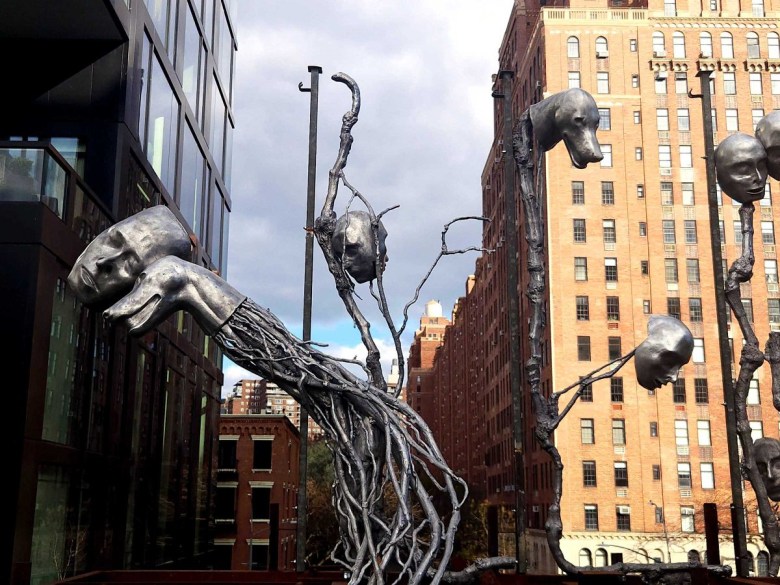Along the 24th Street stretch of Manhattan’s High Line, cast human and wolf heads abruptly sprout from stripped trees made from bones and bare branches that grow from and around a steel armature. Some plants slouch from the weight of dying blossoms, while others splay out like the fingers of skeletal hands reaching out from buried graves, grasping at the air.
Italian artist Giulia Cenci’s “secondary forest” (2024), a new commission that melds the natural and industrial worlds, kicks off a pensive spring season at the High Line. The installation positions humans, animals, and plants as equals in a ghostly installation derived from found industrial objects and cast scrap metal.
The term “secondary forest” refers to the natural regrowth of vegetation in an area that once had been cleared through human intervention, inviting passersby on the elevated park to consider the cycle of life and growth and how it is impacted by unnatural causes. Cenci’s use of agricultural tools, old machinery, and car parts points at the Meatpacking District and the High Line itself as she forcibly dissolves the hierarchies separating people and industry from the natural world.
Diana Barboza and Romi Favayedi, friends visiting New York from Los Angeles and Toronto to see An Enemy of the People on Broadway, told Hyperallergic that the sculpture had a theatrical quality to it, interpreting the human heads as neutral masks.
Barboza commented that the bones and branches looked “genetically spliced together” to make up the trees in Cenci’s sculpture, also noting that “it looks like the rest of the people and the branches were devoured by some metallic entity, and the only things that survive are plants, which I love.”
“It does also look like the animals came out better than the people in this particular situation,” Barboza continued, pointing out the anguished expressions on the human faces.

Favayedi gestured to the two human heads lying on top of one another, stating that the pair looked like they died together and “all that was left of them were their nervous systems.”
“There’s a death quality — the fact that there are branches, that aren’t meant to be blooming along the faces of despair,” she explained.
Two of Tschabalala Self’s existing works, as well as new work by Teresa Solar Abboud, Tishan Hsu, and Chloe Wise, are slated to join “secondary forest” later this spring along different areas of the park. Cenci’s commission is on view at the High Line on 24th Street through March 2025.


